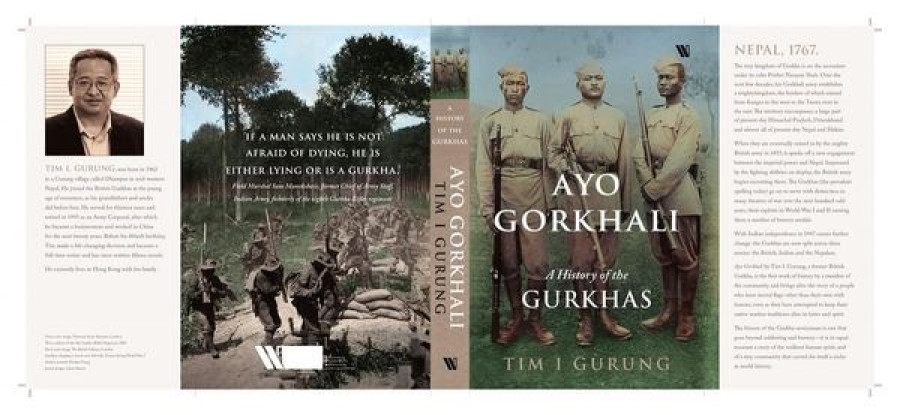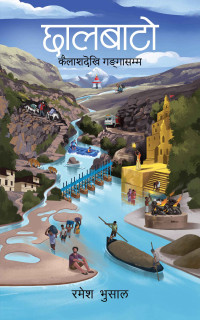Books
The legend of the Gurkhas
To know about the past, present and way forward for the Gurkhas, Tim I Gurung’s Ayo Gorkhali: A History of Gurkhas is an essential read.
Atul K Thakur
Ayo Gorkhali (The Gurkhas are upon you) is the battle cry of one of the world's famous hands of fighting men: Nepal's ‘happy warriors.’
“If a man says he is not afraid of dying, he is either lying or is a Gurkha,” Field Marshal Sam Manekshaw, former chief of army staff, Indian Army (formerly of the 8th Gorkha Rifles Regiment) famously said about the Gurkhas and immortalised their edge in the battlefield and re-defining the conventional warfare.
While the Gurkhas have been much celebrated, there is hardly a book written on them from within the community. Tim I Gurung, who hails from mid-western Nepal and served in the British Army Gurkhas, should be given the credit to be one of the first to come out with the unfiltered voices of veteran Gurkhas besides presenting readers a comprehensive account of their unique place in history with his new book, Ayo Gorkhali: A History of Gurkhas.
With profiles and anecdotal references, the author succeeds to bring alive the stories of people who served flags of countries other than their own with honour, even as they kept their native warrior traditions alive in letter and spirit. The history of the Gurkha serviceman is one that goes beyond soldiering and bravery—it is in equal measure a story of the resilient human spirit, and of a tiny community that carved for itself a niche in world history, and through his book, Gurung makes it possible for readers to look at the Gurkha community with a rich sense of history.
The Gurkhas of Nepal have claimed universal acclaim with their unique contributions to world history, as they have served in the armies of Nepal, India and Britain, and helped Prithvi Narayan Shah consolidate and establish a mighty kingdom in Gorkha. What started back in 1767 shaped the future course of Nepal to finally emerge as a republic.
As an insider, Gurung has a clarity of thoughts about presenting the life struggles of the Gurkhas and the reasons for them to acquire war skills. Surely, looking for a decent and dignified life away from the feudal set-up made them serve in the armies. Especially so, in the early 19th century, they had no better choice than living in the far-flung places in Nepal. In 1793, the Gurkha Kingdom appealed to the British Empire seeking protection from the Chinese attack through Tibet. The first British mission came to Nepal in 1793 followed by the next one in 1802, however, the collaboration didn’t last long with the feud among the Gurkhas for the suspicious role of British mission.
The new fundamentals led to the Anglo-Nepalese War or Gurkha War (1814-16) fought between the Gorkha Kingdom and the British East India Company with an overtly territorial ambition. The British achieved victory and the Sugauli Treaty (March 4, 1816) was signed ending the war. With the Sugauli Treaty, Nepal renounced its territorial claim on many parts of the Tarai (or lowland country) and parted with its conquests west of the Kali River and reaching to the Sutlej River. Nepal could retain its independence, though the country had to be in supervision of a British Resident (for Protectorate) with the status of an Ambassador to an independent country. Despite the arrangement, Nepal succeeded in not letting the British Resident be a ‘Controlling Agent’ of British East India Company that ruled its immediate neighbour, India.
Sir David Ochterlony, a British general, recommended in 1814 that the Gurkha enemy should be pacified and recruited into the service of the British Raj. With the Gurkha War, a terrified British Empire knew about the valour of the Gurkhas and that made the beginning of Gurkhas’ entry in Indian and British armies. An old British cannon, captured by the Gurkhas, can still be seen in Nepal. This book gives readers an overview of all these events.
Over the decades, the Gurkhas had witnessed difficult transitions with the changing geo-strategic considerations. As a new Republic and a firmly established democracy, Nepal’s Foreign and Strategic Affairs policies are more driven through the notion of ‘enlightened self-interest'—and there is marked change in approach from the time of the monarchy when the establishment was officially at ease with the Gurkhas’ distinct presence in the Indian and British armies. Under the new system too, the system has not made any deviation. Albeit the Gurkha war veterans face the complication in getting their pension back at home, like many other issues, this too needs simplification under aegis of policymakers in India and Nepal. With the authentic accounts of ex-Gurkha veterans and field research, Gurung presents a realistic picture.
As a maturing democracy with a federal system and highly diverse ethnicity, Nepal has an edge with the Gurkhas’ long-standing glorious history and impressive present. Among the key factors of a deep bilateral relation between India and Nepal, certainly the Gurkhas’ contribution in safeguarding India’s borders is vital. The literary scene is blossoming in Nepal, more writers should step in to look back and write about the journey of their nation. In the collective consciousness, it is important that history gets its due. To know about the past, present and way forward for the Gurkhas, Tim I Gurung’s Ayo Gorkhali: A History of Gurkhas is an essential read.
Book:Ayo Gorkhali: A History of Gurkhas
Author: Tim I Gurung
Pages: 320
Price: Rs 799




 13.12°C Kathmandu
13.12°C Kathmandu










